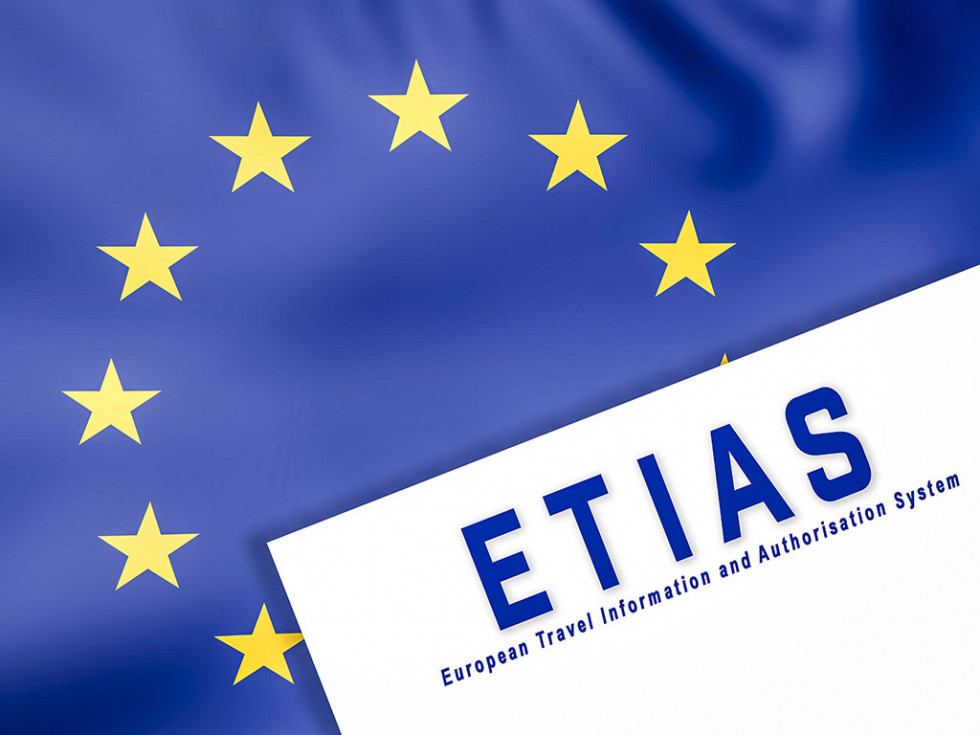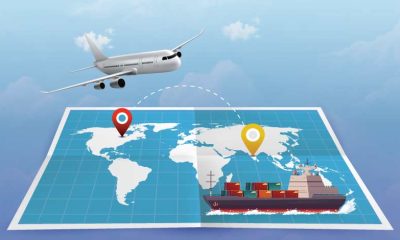Travel
ETIAS: How ETIAS Visa Works, The Reason For It, Cost, FAQs & More

The European Travel Information and Authorization System is abbreviated as ETIAS. It is a visa waiver pre-screening program for travelers to the European Union who do not require a Schengen visa. It was developed by the EU to defend and strengthen its borders, and it is quite similar to the Electronic System for Travel Authorization (ESTA) in the United States. Those with an ETIAS will be permitted to enter the Schengen Zone’s 27 member states, as well as Bulgaria, Cyprus, and Romania.
ETIAS Launching In 2024
ETIAS will be fully implemented in 2024 and mandatory for all Schengen visa liberalized tourists. A six-month transitional period will let visitors adjust to the new system. Travelers will receive information at every Schengen entry border during this time.
While not required, visitors who can should register with ETIAS during the transitioning time. If your passport is valid, you can travel freely to the Schengen Area with ETIAS for three years.
“ETIAS will help improve our security and protect our citizens. It will require all those who do not need a visa to be checked before they travel to the Schengen area. Anyone posing a risk can be prevented from coming.”
Maltese Presidency of the Council
What is the Purpose Behind the Implementation of ETIAS?
There are now 63 countries whose citizens are permitted to enter European Union countries without a visa, including Schengen Area and EFTA member states. Despite the fact that there is a 90-day maximum for a six-month period, many people have been breaking the rules and staying in Europe for longer. The introduction of the ETIAS aims to prevent immigrants with criminal records and other undesirable individuals from entering and overstaying in European countries.
Some of the main purposes behind the establishment of the ETIAS are as follows:
- To be able to make advance checks,
- To deny travel authorization, if necessary, to visa-exempt third-country nationals travelling to the Schengen area,
- To improve internal security,
- To prevent illegal immigration,
- To limit public health risks, and
- To reduce delays at the borders by identifying persons who might pose a risk in one of these areas before they arrive at the external borders.
Who Will Need ETIAS to Travel to Europe?
The countries, the residents of which will need to be in possession of an ETIAS in order to enter the European Union are as below:
- Albania
- Antigua and Barbuda
- Argentina
- Australia
- Bahamas
- Barbados
- Bosnia and Herzegovina
- Brazil
- Brunei
- Canada
- Chile
- Colombia
- Costa Rica
- Dominica
- El Salvador
- Georgia
- Grenada
- Guatemala
- Honduras
- Hong Kong
- Israel
- Japan
- Kiribati
- Macau
- Malaysia
- Marshall Islands
- Mauritius
- Mexico
- Micronesia
- Moldova
- Montenegro
- New Zealand
- Nicaragua
- North Macedonia
- Palau
- Panama
- Paraguay
- Peru
- Saint Kitts and Nevis
- Saint Lucia
- Saint Vincent and the Grenadines
- Samoa
- Serbia
- Seychelles
- Singapore
- Solomon Islands
- South Korea
- Taiwan
- Timor-Leste
- Tonga
- Trinidad and Tobago
- Tuvalu
- Ukraine
- United Arab Emirates
- United Kingdom
- United States
- Uruguay
- Vanuatu
- Venezuela
* Since the EU has partially abolished the visa-free travel agreement with Vanuatu, only Vanuatuan nationals holding ordinary passports issued before May 25, 2015, can enter the Schengen Area visa-free.
Other countries that are not on this list will need to apply for a regular Schengen Visa in order to visit Schengen member states, whereas visitors who want to visit non-Schengen European countries will need to apply for regular visas as each country requires. Check here to see if you require ETIAS.
The ETIAS scheme is intended to cover the 30 million people who enter Europe each year from countries where visas are not required.
How Will the ETIAS Work?
Though some may believe that this is simply a simplified form of visas, this is not the case. While visas are significantly more comprehensive, costly, and time-consuming to apply for, the ETIAS will be quite straightforward, with an online application form that can be finished in minutes. One application form is expected to take up to ten minutes to complete. The ETIAS will allow people to enter and stay in Europe for up to 90 days over a six-month period.
How to Get an ETIAS?
Before you start to make your application make sure that:
- You have sufficient funds in your bank.
- You have a strong internet connection.
- Each traveler will have to apply online prior to their travel in order to receive an ETIAS. However, the application does not guarantee that you will get the ETIAS. The information you have given will be processed to the other EU databases, where a decision will be taken whether you shall be granted an ETIAS or rejected.
The application asks for basic personal information as:
- Full name
- Date of birth
- Place of birth
- Sex
- Information regarding your parents
- Passport details
- Nationality details
- Valid email address
- Phone number
- Payment
It will also ask questions related to:
- Education
- Employment history
- Details regarding past trips in Europe
- Medical condition
- Drug use
- Criminal history
- Security information
Apart from the visas, the European Travel Information and Authorization System does not require biometric data as fingerprint scanning.
How Much Will an ETIAS Cost?
The ETIAS costs 7 € for applicants over 18, free for those under 18 and over 70. The cost must be paid online with a debit or credit card. If the payment fails, your ETIAS application will be held until you can pay.
If your application is approved, you’ll get an email within minutes. If your permission is doubtful, you must wait 72 hours before hearing back, so apply early.
ETIAS Application Supporting Documents
You will not require any written documents, like you would when applying for a visa, saving you time, money, and nerves.
All you’ll need is your passport, which must be valid both when you arrive in Europe and when you leave. On the biographic details page of the passport, there must be a machine-readable part. In addition, while not always required, your passport may need to be an electronic passport with the electronic passport symbol, or chip.
Application Decision
The application is initially screened across multiple systems, such as SIS / VIS / EUROPOL DATA / SLTD (Interpol) / EURODAC / ECRIS, the ETIAS screening rules, and the ETIAS watch list, to see if the data in the application file matches the data causing a hit. If not, authorities will manually process the application. Application issuance or rejection will take no more than 96 hours following application submission in certain instances.
You can use an ETIAS for five years. It expires after five years, so you must apply again. If your passport expires before your ETIAS, you must reapply with your new passport.
If your application is denied, you will receive the reasons and the authority or nation that made the decision through email.
Boarding and Arrival at EU
ETIAS can only be used for transit, tourism, and business travel, not for working, studying, or living in the Schengen Zone.
Your ETIAS will be examined upon arrival in Schengen, whether by air or sea. You will be enrolled in the ETIAS database for Schengen Zone entry. Print and bring your travel authorization from your email.
The border guard decides whether to allow admission or stay, therefore travel authorization is not always a guarantee.






















